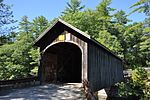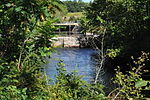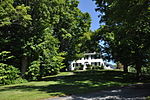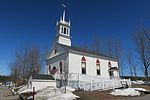White Rock, Maine
Gorham, MaineMaine geography stubsVillages in Cumberland County, Maine
White Rock is an unincorporated community in the town of Gorham, in Cumberland County, Maine, United States. It formerly had a school, called White Rock Elementary, until it closed in 2011 with the coming of Great Falls Elementary on Route 237. White Rock was named for a large white boulder that once stood in front of the current church. White Rock is home to part of the Mountain Division Trail, a partially completed rail trail with segments that follow the former Mountain Division line between Fryeburg and Portland.
Excerpt from the Wikipedia article White Rock, Maine (License: CC BY-SA 3.0, Authors).White Rock, Maine
Sebago Lake Road,
Geographical coordinates (GPS) Address Website Nearby Places Show on map
Geographical coordinates (GPS)
| Latitude | Longitude |
|---|---|
| N 43.757 ° | E -70.469638888889 ° |
Address
White Rock Baptist Church
Sebago Lake Road 300
04038
Maine, United States
Open on Google Maps







